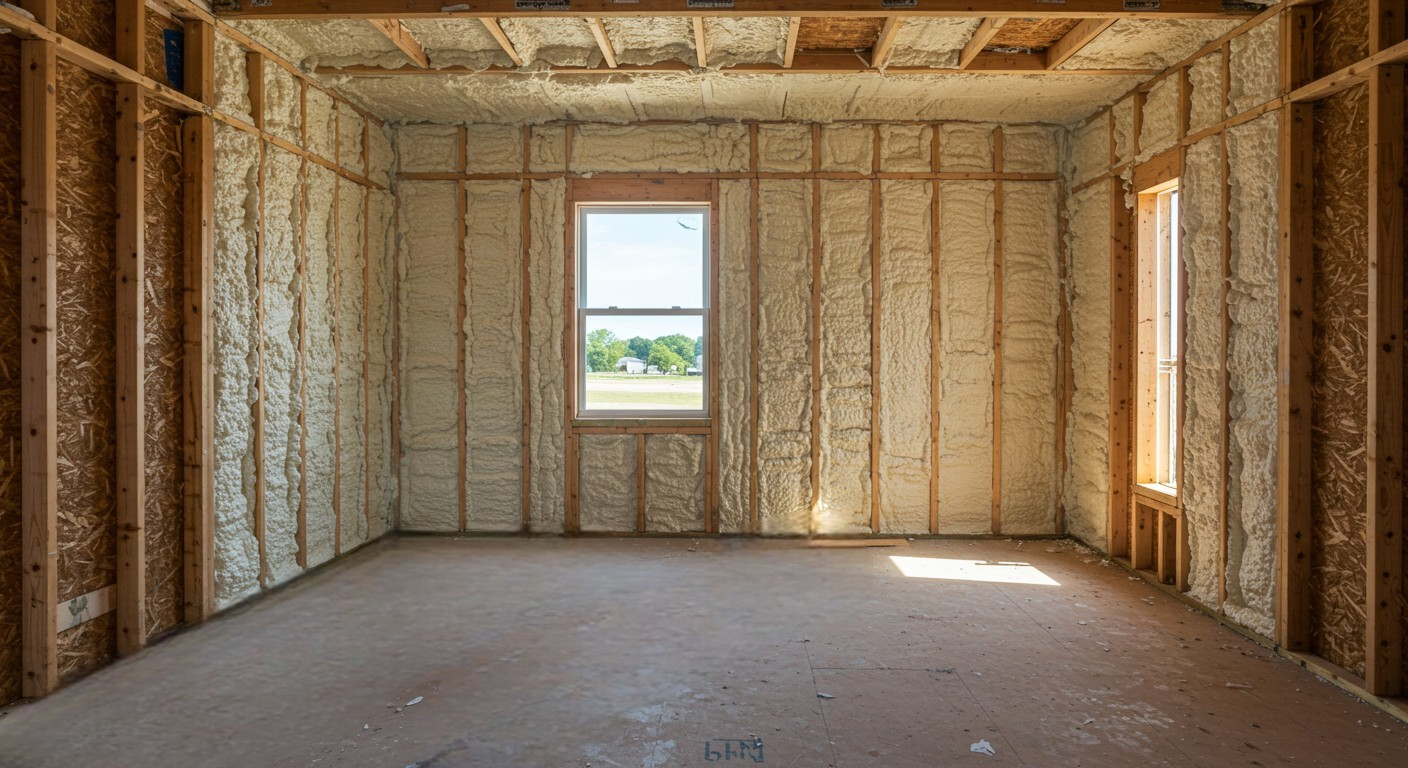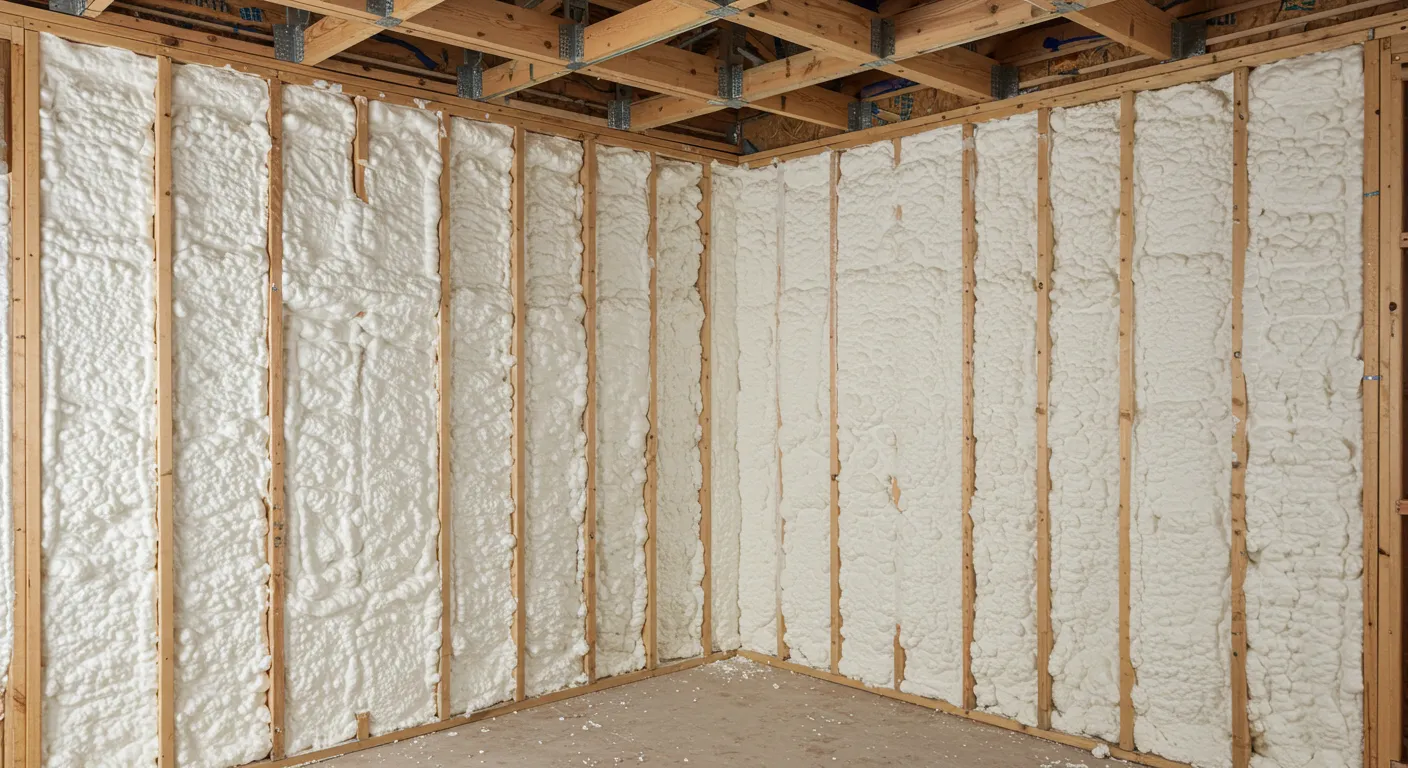
Spray foam insulation offers energy savings, moisture control, and structural reinforcement. In Metropolis, IL, where temperature extremes and humidity fluctuations are common, spray foam creates an effective thermal envelope that reduces HVAC strain and minimizes long-term maintenance. Compared to traditional fiberglass, it delivers superior air sealing and moisture resistance—two elements critical to homes and businesses in this region.
Spray foam fills gaps, bonds directly to building materials, and prevents conditioned air from escaping. For Metropolis homeowners managing crawl spaces, wall cavities, or retrofit applications, the efficiency gains translate to tangible cost savings. Armored Insulation has extensive field experience applying spray foam under varying local site conditions, including high moisture environments and aging structures with inconsistent framing.
| Insulation Type | Air Seal Quality | Moisture Resistance | R-Value per Inch | Longevity | Typical Use Cases |
|---|---|---|---|---|---|
| Spray Foam (Closed-Cell) | Excellent | High | 6.5 – 7.0 | 30+ years | Walls, crawl spaces, foundations |
| Fiberglass Batt | Poor | Low | 2.9 – 3.8 | 10-20 yrs | Attics, standard wall cavities |
| Blown-In Cellulose | Moderate | Low-Moderate | 3.2 – 3.8 | 20-30 yrs | Retrofit walls, attics |
| Mineral Wool | Good | High | 3.7 – 4.3 | 30+ yrs | Fire-rated assemblies, exterior walls |
| Feature | Spray Foam (Closed-Cell) |
|---|---|
| R-Value per Inch | 6.5 – 7.0 |
| Water Absorption Rate | < 1% |
| Air Infiltration Rate | 0.02 cfm/ft^2 |
| Compressive Strength | 25 psi |
| Thermal Drift Over Time | Minimal |
| Vapor Permeability | 1.2 perms @ 2 inches |
Bonus Tip: In flood-prone areas, use closed-cell foam on rim joists and crawl space walls to help manage post-flood remediation.

Bonus Tip: Use thermal imaging post-installation to verify uniform coverage and detect missed cavities.
It conforms tightly to uneven framing, sealing gaps that fiberglass often leaves exposed.
Closed-cell spray foam is water-resistant and helps manage humidity-related issues like mold.
Closed-cell has a higher R-value and moisture resistance, ideal for basements and crawl spaces.
Most residential projects complete within 1–2 days, depending on site prep and curing.
For reliable insulation solutions in Metropolis, IL, contact Armored Insulation. Every project is handled with field-tested precision based on local climate and structural needs.
Phone: (270) 331-4844 Email: [email protected]
Yes. Once cured, it can be trimmed, coated, or covered with drywall or paneling.
No. Spray foam is inert and not a food source for animals.
Minimal thermal drift with closed-cell foam ensures consistent R-value for 30+ years.
None beyond visual inspection—its sealed nature makes it low-maintenance.
Modern spray foams are low-VOC and meet indoor air quality standards when installed correctly.